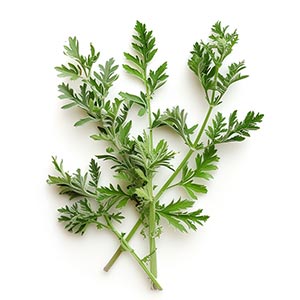Artemisia, a genus that encompasses a variety of aromatic plants including the well-known Armoise (Artemisia vulgaris), or mugwort, holds a distinguished place in the world of perfumery. Esteemed for its rich history that spans various cultures and eras, this herb is a favored ingredient for its unique and complex aromatic profile. The scent of Artemisia varies among its species but generally features green, herbal, and often slightly bitter notes, which bring distinctive depth and character to perfumes. This nuanced fragrance makes Artemisia a favorite among perfumers, who use it to craft sophisticated and layered scent compositions. Celebrated for its versatility, Artemisia blends harmoniously with a wide range of other fragrance notes, imparting an aromatic freshness that can enhance both modern and traditional scents, from bold, herbaceous fragrances to more subtle, green accords. More than just its scent, Artemisia evokes a sense of timelessness and connection to nature, recalling the wild landscapes and herbal traditions from which it originates. Its enduring appeal in fragrances is a testament to its captivating and versatile nature, making it a staple in the olfactory palette of perfumers around the world.
Natural or Synthetic?
Artemisia, commonly known as Wormwood or Mugwort, is used in its natural form in perfumery. The essential oil is extracted primarily through steam distillation from the leaves and flowering tops of the plant. Artemisia oil imparts a distinctive green, herbal, and slightly woody aroma, contributing complexity and uniqueness to fragrance compositions. It's valued for its aromatic richness and is often used in creating fresh, herbal accords in perfumes. The natural essence of Artemisia is preferred for its authenticity and the depth it lends to fragrances, although synthetic analogues might be used to replicate its scent profile in some instances.
Fragrance Families Artemisia Most Commonly Found In
Show fragrances that contain Artemisia as a note



